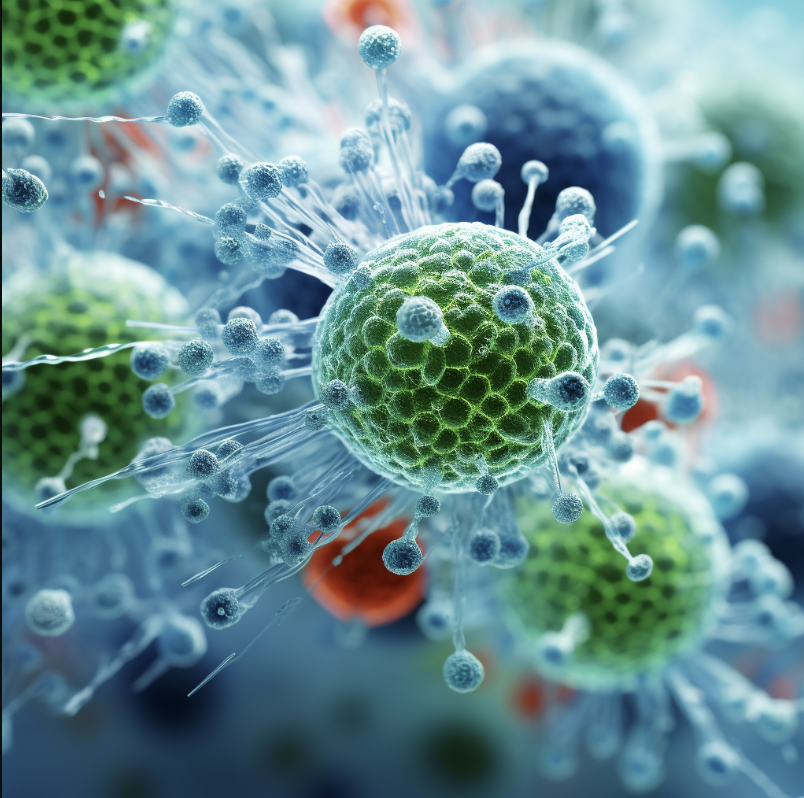
Written by Dr. Diane Mueller: For those just diving into the realm of Lyme disease, it’s essential to understand this ailment isn’t a simple one to conquer. What’s made it even more challenging is the phenomenon of ‘persister cells’.
While many bacteria, like the one causing Lyme – Borrelia burgdorferi, can adapt and become antibiotic-resistant, there’s another unique layer to this puzzle with Lyme disease. These are the persister cells, which unlike the antibiotic-resistant bacteria, do not undergo any change in their DNA. They continue to exist, remaining impervious to conventional treatments.
Often, when patients first get diagnosed with Lyme disease, they’re prescribed antibiotics such as Doxycycline. On the surface, it seems like the logical first step. After all, if you’re dealing with a bacterial infection, the intuitive response is to combat it with antibiotics.
However, the deeper dive reveals a more intricate scenario. While antibiotics, including Doxycycline, are effective against bacteria causing Lyme, however they also inadvertently push some of these bacterial cells into a dormant state. This dormant state is where our previously mentioned persister cells come into play.

Here’s the twist: individuals treated with antibiotics often report a significant improvement in their condition. This uplift in health is due to antibiotics, which does kill a vast majority of the Lyme bacteria. But what’s often overlooked is the silent conversion of a portion of these bacteria into “sleeper cells”.
Now, why is this concerning? Because any subsequent stressful situation or event can act as a trigger, waking these dormant persister cells. Once activated, they multiply and, unfortunately, result in the return of all-too-familiar Lyme symptoms.
In my journey as both a patient and a practitioner, I’ve increasingly leaned towards a more holistic approach in treating Lyme disease. The reason is twofold: the limitations of antibiotics and the potential of certain herbs.
A shining beacon in the herbal space for treating Lyme is cryptolepis. Recent research has illuminated its efficacy against persister cells, marking it as a potential game-changer. I’ve always advocated for integrating both conventional and holistic treatments. Still, with findings like these, the inclination towards herbs like cryptolepis becomes even more compelling.
To grasp the nuances of Lyme disease, one must understand the body’s natural response mechanism to it. This ailment thrusts the body into what we term as a ‘survival state’, eliciting the fight or flight response. While this is a protective measure by the body, it’s not conducive for healing.
Stress management, coupled with building resilience against it, holds the key. A number of techniques, from visualization to breathwork, can be instrumental in this endeavor. In addition, modern methods like brain retraining, which has been incorporated extensively in our practice, can guide the brain away from the heightened state of alertness (or the sympathetic state) and nudge it towards a state conducive to healing.
This proactive approach does not only address the immediate symptoms but also acts as a preventive measure, ensuring that dormant persister cells are kept in check.
We have helped thousands of people restore their health and quality of life by diagnosing and treating their Lyme Disease and Mold Illness.
In concluding this exploration into Lyme disease and the significant role of persister cells, it becomes abundantly clear that a multi-pronged approach is needed. From understanding the limitations of conventional treatments to harnessing the power of herbal remedies and stress management techniques, we need to arm ourselves with all the tools at our disposal. Remember, knowledge is power, and together, we can tackle the challenges posed by Lyme disease.
The Causes or Mechanisms of Action
Despite the sometimes-similar symptoms, the MOAs of these two conditions are very different:
What is the Link?
Similar Symptoms & Mis-Diagnosis
So how do we differentiate between LD and FM?
How do we untangle symptoms and identify a case of chronic Lyme disease vs post-infectious Fibromyalgia?
We need to do a thorough exam, the correct labs and a deep analysis of the overlapping symptoms. There are other things to look at to get a correct diagnosis. These include:
In our clinic, we have expertise in treating a range of complicated, difficult-to-diagnose conditions like Fibromyalgia and Lyme Disease. We look for the root causes in our patients to identify what could be causing the symptoms. We regularly treat and resolve Lyme, chronic infections and other complex conditions in patients in our Functional Medicine clinic.
We have helped thousands of
people restore their health
and quality of life by diagnosing
and treating their Lyme Disease.
“Dr. Mueller’s approach to medicine is refreshing! There is only so much you can do with western medicine and in my life I was needing a new approach. By addressing the whole body, nutritional diet factors, environmental factors, blood work, and incorporating ideas I had not previously known, I was able to break through with my conditions. I am not only experiencing less pain in my life, but through the process of healing guided by Dr. Diane Mueller, I am now happy to say I have more consciousness surrounding how I eat, what to eat and when things are appropriate. Living by example Dr. Mueller has a vibrancy that makes you want to learn and know more about your body and overall health. I highly recommend her to anyone looking for new answers, a new approach to health, or in need of freedom from pain and limitations.”
-Storie S.
Kihei, HI
We have helped thousands of people restore their health and quality of life by diagnosing and treating their Mold Illness, Lyme Disease and other root causes.
